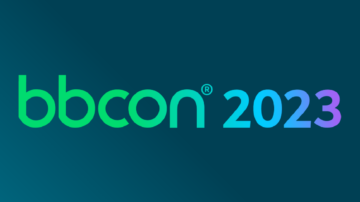The Better FAFSA: What Colleges Need to Know Right Now

The Free Application for Federal Student Aid—commonly known as FAFSA®—is the form current and prospective college and career school students must fill out each year to qualify for federal financial aid, whether that be in the form of grants, loans, or work-study funds. Many colleges and universities also use it to help determine a student’s eligibility for their own need-based financial aid programs.
Until very recently, the federal government had not made changes to the FAFSA in more than 30 years and the process was overly complex, especially for first-generation students and those from lower-income backgrounds. In 2020, the U.S. Congress passed the FAFSA Simplification Act to completely overhaul the system. Due to repeated delays, the 2024–25 FAFSA form was not released until the very end of 2023, it has only been available intermittently, and many applicants have had difficulty gaining access. There are so many unknowns that students, families, and school administrators still feel a great deal of uncertainty.
What is the Better FAFSA?
The new FAFSA is intended to expand access to federal student aid and to simplify the application and award process. Referred to as “The Better FAFSA,” the new process promises greater transparency, including better visibility into potential Pell Grant eligibility.
While the long-term intent is to simply the process and increase college accessibility, the short-term impact of the delays has meant a great deal of frustration for students and their families and major restraints on colleges that have historically relied on the resulting Student Aid Reports (SAR) to determine non-federal financial aid packages.
What makes the Better FAFSA better?
For starters, the Better FAFSA has fewer questions for applicants to complete and uses more modern terminology. It also takes federal tax information directly from the IRS and transfers it into the form, rather than asking students and families to manually enter certain data.
The Better FAFSA promises greater transparency, too. The Federal Student Aid (FSA) office in the U.S. Department of Education released look-up tables to help students determine their estimated Pell Grant amounts prior to completing their applications. Previously, applicants had to wait until their FAFSA was complete and SAR were made available to know how much aid they could receive. Now, families will have a much clearer estimate before and during the process and fewer Pell Grants should go unclaimed.
More information:
- What’s Changed for the 2024–25 FAFSA® Form? – Video from FSA
- FAFSA Simplification Act Changes – Summary from FSA
- Top 5 Improvements Coming with the Better FAFSA from the National College Attainment Network
What has not improved?
There are some aspects of the Better FAFSA that may make things more difficult for students, families, and school administrators.
- Timing: With affordability as a primary concern of higher education applicants, schools that get financial aid packages to students more quickly may be more successful recruiting those students. The delays with the Better FAFSA have forced many colleges to get creative, leveraging CSS profiles in lieu of the SAR or as a backup tool until they receive FAFSA data.
- Subjectivity: Applicants have more liberty to estimate property and investment values rather than relying on professional estimates and valuations. While this could be considered an improvement, it could also cause more angst for families who fear an IRS audit if numbers vary in FAFSA submissions vs. tax reporting. This potential variance could be significant, as estimates are now made as of the day the FASFA is submitted rather than using historical or past year valuations.
- FSA Logins: No longer can an applicant request an FSA login at the same time they’re sitting down to complete the FAFSA. Applicants must now request FSA logins in advance and confirm them ahead of time. This prolongs the process for applicants and will be a point of confusion for some, especially if they’re waiting until the last minute (or deadline) to complete the Better FAFSA.
- Verification: With these changes, the FSA is essentially saying that verifying information is not the role of college financial aid offices, which historically had complicated verification processes. Instead, they want financial aid offices to trust the information provided by the submitter. While this sounds good in theory, it raises concerns for colleges due to past audit experiences. Because this process is so new, they do not know what verifications are or are not needed for new auditing processes. What happens if the applicant knowingly or unknowingly enters incorrect information?
What are the next steps?
Blackbaud partnered with our friends at Get2College on a recent webinar full of tips and resources to help higher education financial aid administrators navigate the Better FAFSA. Watch it here on demand:
It’s critical to educate yourselves on FAFSA changes and take advantage of resources available to help support families. School administrators need to get ahead of the changes and the impact they’ll have on workflows. Here are some more free resources:
- Get2College
- All about the Better FAFSA
- Free resources for students
- College prep checklist
- FAFSA Tracker — An interactive dashboard that dives into the data in aggregate or by state to track progress towards having every high school senior complete a FAFSA.
- National College Attainment Network
At the end of the day, school administrators, families, and students all want the same thing—access to education. Will federal initiatives help move the needle and bring an influx of students back to education? Will the Better FAFSA help alleviate the shrinking enrollment pipeline and expand college access to more students? There is light on the horizon, but only time will tell.



